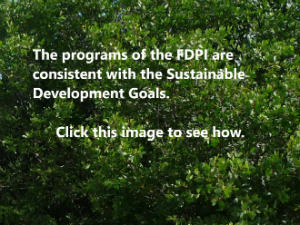By Toni-Ann Reid and Winston Quest October 6, 2017
Paper presented at the Caribbean Urban Forum 2017
Abstract
The compounded effects of climate change, escalating population growth, increased land development, alongside socio-economic challenge expose weaknesses in Jamaica’s urban communities, highlighting the vulnerabilities and emphasize the need for sustainable interventions towards a resilient future.
What if we designed a new city using an old one?
As the capital city of Jamaica: Kingston generates the most culture, technology and commerce alongside human development spatially. As the city grows, not all impacts of land use are properly accounted for in land use regulation, involving the persistent fragmentation and inequity of urban green spaces. Communities are in Protected Areas and Forest Reserves, with the entire city falling within a Watershed Management Unit. The relationship with the ecological space has become highly mediated and complex with limited appreciation for it all. It has been suggested that planners have abandoned the ‘garden city’ concept, with greater emphasis and favour on private green spaces and delineated subdivided open spaces.
This proposal will revisit the relationship between human and environment throughout urban communities with focus on identifying spatial patterns and layouts for proposed green spaces, infrastructure and networks. As the premier planning agency in the country, the National Environment and Planning Agency is tasked to create a framework and plans for orderly progressive development coupled with environmental management and establishing green standards; building the case for an urban green growth agenda. In acknowledging the impacts and drivers on communities throughout Kingston, it is necessary to look beyond how spaces are used, but instead how ecological spaces influence culture, movement, socio-economics, well-being and quality of life.

Great and innovative approach, and well done article. Now looking forward to implementation.
For persons that requested information on similar ideas, see the URLs below.
Article on reconnecting urban areas to Nature in Rio de Janeiro
UN-Habitat and UN Environment: Greener Cities Partnership
Biophilic Cities
City Parks Alliance, USA